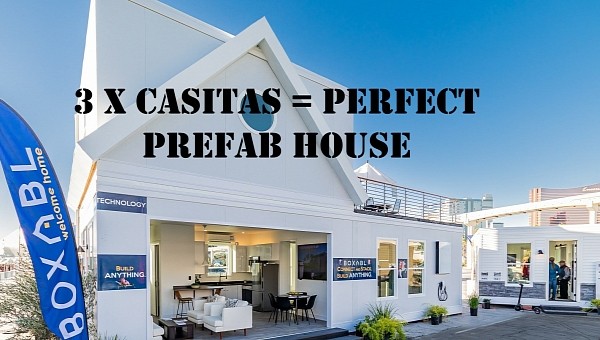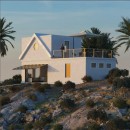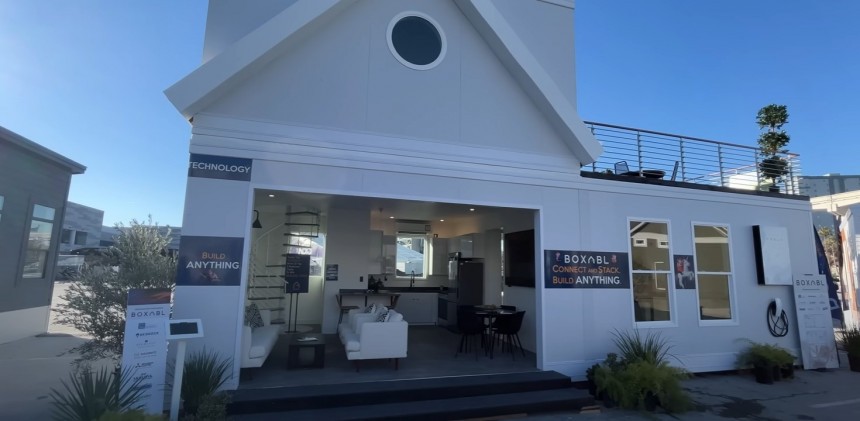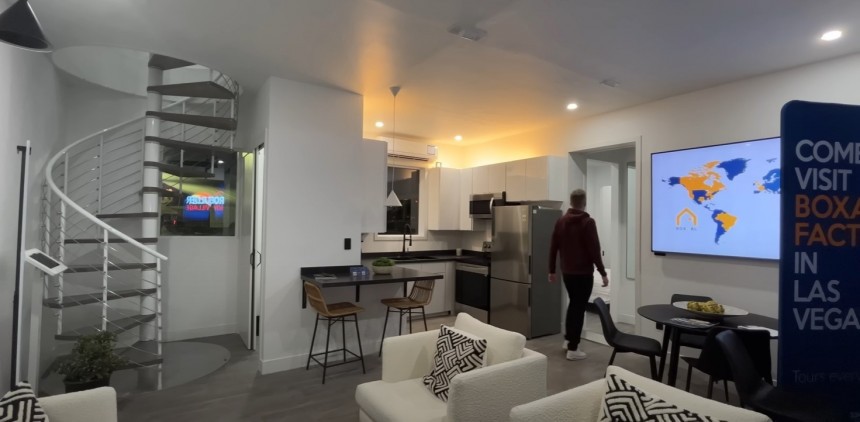There are prefabs in the world, and then there’s Casita, the lightest, most affordable, and durable tiny house. Better than a Casita is only three Casitas assembled together to make a full-size house for an entire family.
The current housing crisis, the downsizing frenzy, and one certain Elon Musk helped turn the Boxabl Casita into the hottest and most in-demand prefab house in the world. Demand for the Casita is sky-high and it’s not even in production yet, but as it turns out, it’s just the beginning for this Las Vegas-based company.
Boxabl is a startup with a very noble purpose: that of solving the housing crisis by offering affordable, easy-to-set-up and move-around units that are also versatile, durable, and produced in such a way as to cut down delivery timelines by months. The Boxabl flagship is the aforementioned Casita, a tiny home that you can set up within days without additional land prep, which is light enough to tow on location (even with a Tesla, if you’re feeling particularly adventurous) and yet spacious for the entire family due to clever design, if not the actual size of the footprint.
The Casita is, in short, the tiny home everyone and their mother wants right now. As it so happens, it doesn’t even exist in production form, in the sense that the customer model hasn’t been finalized yet. Before Boxabl starts to ship the first Casitas to any one of those 170,000 people on the waitlist, it has certain government contracts to see through.
But that’s not stopping this ambitious startup from further exploring options, even if they’re not for the immediate future. At this year’s International Builders’ Show (IBS), precisely four years after the IBS debut of the Casita, Boxabl introduced a prototype for a full-size house. It doesn’t have a name, let alone a moniker as cute as “casita,” and there are currently no plans to bring it into production, but it does serve to highlight the future of Boxabl – and, if Boxabl has its way, the future of housing.
This prototype is still a prefab, one that took the team one week to set up for the show, as founder and CEO Paolo Tiramani told Kerry Tarnow on site, but the goal is to cut down assembly time to just one day. It’s basically still a Casita, but times three now, because it’s a house created by stacking and connecting separate modules, to create a larger living space.
Galiano Tiramani, founder and CEO of Boxabl, says that the future of housing includes bigger rooms, with various interiors, that you can stack and connect, but which can be easily transported on-site in flat form, and then adapted to individual needs and budgets. The full-size prototype is better than a Casita because it’s actually three Casitas.
The larger layout means more comfort and more amenities, which would address the number one complaint about Casita – namely that it’s not suitable for family life. The house retains a compact footprint on the ground of just 20 by 40 feet (6 by 12 meters), but it offers a living space of 1,100 square (102 square meters) feet divided between three bedrooms, two and a half bathrooms, a large living room, and even a rooftop terrace with dual access.
As the video tour below shows, the ground floor is made up of two modules, one holding the living room, the open-plan kitchen, and a small half-bath, and the other for the kids’ bedrooms that share a full bathroom. Upstairs is just one unit, designed exclusively for the master bedroom with an even larger bathroom, connected to the downstairs by means of a spiral staircase. The roof of the kids’ unit is the terrace, accessible both from the master bedroom and from the outside, where Boxabl imagines a garden.
Based on the plans for the Casita, one could imagine such a prefab house would ship with insulation, AC and heating as standard, and ready for optionals that would render it off-grid or more efficient. The Casita is built with structurally laminated panels, and labeled hurricane- and storm-resistant, flood-resistant, fire-resistant, and snow-resistant, so it’s basically indestructible, in addition to being cheap to maintain and “meant to last a lifetime.” The prototype would be all these things as well.
The bad news is that Boxabl has no plans to focus on such a house in the immediate future since they – quite obviously – have their plates full with the Casita. The good news is that they will, when the time is right, which means they have ample time to perfect the prototype and the process behind the build.
Pricing isn’t even an issue right now, but on a hypothetical level, it’s good news: the home would be priced lower than three Casitas, which starts at $60,000 right now. If we’re to make a wild guess, it’d be that one such prefab home could cost as much as $180,000, but would more likely be priced in the $150K region.
Boxabl is a startup with a very noble purpose: that of solving the housing crisis by offering affordable, easy-to-set-up and move-around units that are also versatile, durable, and produced in such a way as to cut down delivery timelines by months. The Boxabl flagship is the aforementioned Casita, a tiny home that you can set up within days without additional land prep, which is light enough to tow on location (even with a Tesla, if you’re feeling particularly adventurous) and yet spacious for the entire family due to clever design, if not the actual size of the footprint.
The Casita is, in short, the tiny home everyone and their mother wants right now. As it so happens, it doesn’t even exist in production form, in the sense that the customer model hasn’t been finalized yet. Before Boxabl starts to ship the first Casitas to any one of those 170,000 people on the waitlist, it has certain government contracts to see through.
This prototype is still a prefab, one that took the team one week to set up for the show, as founder and CEO Paolo Tiramani told Kerry Tarnow on site, but the goal is to cut down assembly time to just one day. It’s basically still a Casita, but times three now, because it’s a house created by stacking and connecting separate modules, to create a larger living space.
Galiano Tiramani, founder and CEO of Boxabl, says that the future of housing includes bigger rooms, with various interiors, that you can stack and connect, but which can be easily transported on-site in flat form, and then adapted to individual needs and budgets. The full-size prototype is better than a Casita because it’s actually three Casitas.
As the video tour below shows, the ground floor is made up of two modules, one holding the living room, the open-plan kitchen, and a small half-bath, and the other for the kids’ bedrooms that share a full bathroom. Upstairs is just one unit, designed exclusively for the master bedroom with an even larger bathroom, connected to the downstairs by means of a spiral staircase. The roof of the kids’ unit is the terrace, accessible both from the master bedroom and from the outside, where Boxabl imagines a garden.
Based on the plans for the Casita, one could imagine such a prefab house would ship with insulation, AC and heating as standard, and ready for optionals that would render it off-grid or more efficient. The Casita is built with structurally laminated panels, and labeled hurricane- and storm-resistant, flood-resistant, fire-resistant, and snow-resistant, so it’s basically indestructible, in addition to being cheap to maintain and “meant to last a lifetime.” The prototype would be all these things as well.
Pricing isn’t even an issue right now, but on a hypothetical level, it’s good news: the home would be priced lower than three Casitas, which starts at $60,000 right now. If we’re to make a wild guess, it’d be that one such prefab home could cost as much as $180,000, but would more likely be priced in the $150K region.


















